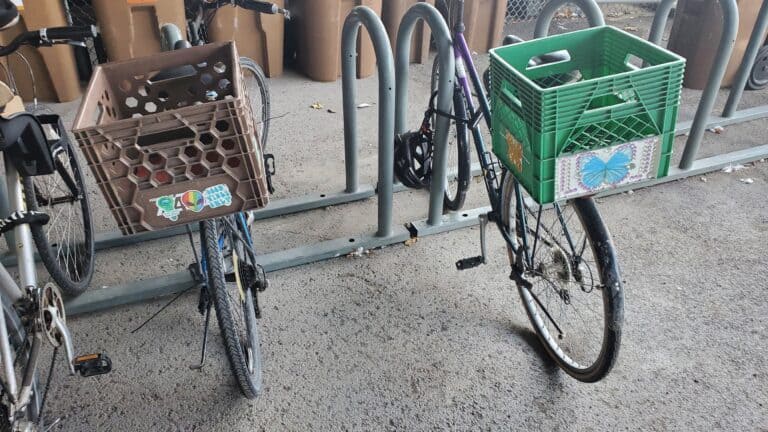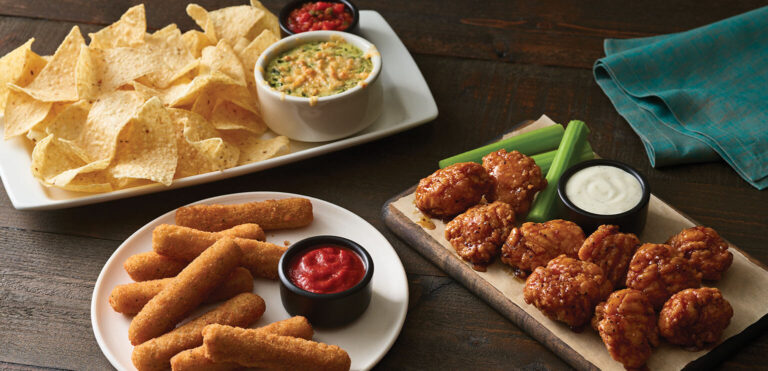Grocery Shopping Without a Fridge: Tips, Tricks, and Survival Strategies
Doesn’t living without a fridge sound like a throwback to the past?
But for many people, living without a fridge is a reality.
In this article I’ll share tips on how to do your grocery shopping without a fridge.
In fact, you’re going to learn:
- The challenge of no fridge lifestyle
- Fruits and vegetables that do not need refrigeration
- Dairy (and dairy alternatives) that don’t need refrigeration
- Meat & protein that don’t need Refrigeration
- Staple non-refrigerated food items
Let’s start by looking at some interesting statistics:
1. In the United States, 99.9% of households have refrigerators. (U.S. Energy Information Administration)
2. In India, only one in four of the country’s homes has a fridge. (BBC)
So, let’s get started.
1. Grocery Shopping Without a Fridge: Choosing the Right Foods
Let me now share with you the secret of surviving without a fridge.
It involves selecting the right foods.
The solution is stocking up on non-perishable, shelf-stable goods. These consist of products with long shelf life, dry foods, and tinned goods.
When making your selection, make sure to keep an eye out for labels that say “shelf-stable” or “no refrigeration required.” With no refrigerator, these foods are your only source of nourishment.
Food that doesn’t need to be refrigerated
I’ve selected non perishable food to get you started to make things simpler:
Canned foods: Canned foods, including fruits, vegetables, and proteins like chicken or tuna, have a long shelf life, are very adaptable, and are a practical and essential source of nutrition for people who don’t have access to a refrigerator.
Dried Foods: Another staple that is great for snacks or as a meal addition is dried fruits, nuts, and grains. These are excellent because they don’t require refrigeration.
Pasta and rice: These two indispensable staples are very adaptable and make for filling, non-refrigerated meals.
Cereal and oatmeal: To add a few more, both of these foods are excellent. A quick and hearty breakfast on the go that doesn’t require a fridge may be made by simply adding milk or water.
Honey and Nut Butter: Adding honey and nut butter to your cupboard will make your morning less monotonous and they are fantastic for sandwiches or as a topping.
2. Pantry Essentials by Food Category
Lunch foods that don’t need to be refrigerated
Fruits and Vegetables
Some fruits and vegetables don’t require refrigeration, as is common knowledge and experience among consumers like you and me:
Apples: Apples keep fresh for a while on my countertop and are a terrific option for everyone in my family at any time as a crunchy snack. They also work well as a quick snack for my kids.
Citrus Fruits: In my kitchen, oranges, lemons, and limes are staple fruits because they are convenient and don’t mind the room temperature.
Potatoes and onions: These are essential kitchen ingredients that I use in a variety of ways in all of my culinary recipes. They are best stored in a cool, dry place.
Avocado: Another fruit that doesn’t need to be refrigerated is the avocado, which is allowed to ripen at room temperature before being stored in the fridge only if not consumed or need be.
Dairy Products and Alternatives
Most dairy products must be kept chilled, but let me offer a few non-refrigerated food options for you below:
Powdered milk: Powdered milk doesn’t need to be refrigerated and is a terrific shelf-stable option for adding milk to recipes or your morning coffee!
Powdered cheese: I used to use real cheese in my recipes, but I found that using powdered cheese worked just as well.
Yes, it is real. They are ideal for sprinkling over nachos or pasta.
UHT Milk: Another need for homes without refrigerators is this ultra-high-temperature milk which is frequently marketed in single-serving cartons and can be refrigerated at room temperature.
Meat and Protein
The majority of protein sources, which are often fresh, require refrigeration, but here are a couple that don’t:
Jerky: I find that jerky, whether it be made of beef, turkey, or even vegan jerky, is a terrific on-the-go protein snack. These are a terrific source of protein and keep well without a refrigerator.
Canned Meat: Chicken, tuna, and salmon are all readily available in cans. The good news is that you don’t need a fridge to store them. By nature canned meat have a long shelf life which works great for a no-refrigerator lifestyle.
Grains & Starches
Rice and Pasta: Rice and pasta are pantry essentials for no fridge that can quickly make a full, filling dinner without the need for refrigeration, which has made my life easier every day.
Bread: While it’s best fresh, most types of bread keep well without a refrigerator for a few days and can be used in numerous meals.
Tortillas: For me and my family, tortillas are these adaptable wraps that make fantastic lunch and dinner options and can be stored at room temperature.
3. Staple Non-Refrigerated Food Items
Along with the goods already listed above, here are some other fundamental no-refrigeration essentials I typically have in my pantry:
Salt and pepper: These seasonings, which are necessary for giving any food flavor, don’t need to be refrigerated.
Cooking oils: Cooking oils can be kept in the pantry for a long time without going bad, including olive oil, vegetable oil, and other cooking oils.
Spices: One of the other pantry essentials for no fridge must also contain a range of spices, such as paprika, garlic powder, and others, that can be used to flavor food.
Vinegar: Vinegar, such as white vinegar or apple cider vinegar, is useful for cleaning and cooking and is another kitchen staple.
Canned Broth: Last but not least, canned broth, whether it be chicken or vegetable, is excellent for soups and stews. Since these have a long shelf life, there is no harm in keeping a few extra cans in the pantry.
4. Food Safety Tips
Now, let’s talk about food safety as we’ve loaded up on non-refrigerated necessities.
To avoid food from spoiling and contamination when you don’t have a fridge, you must exercise extreme caution. Here are some advice:
– Check for Damage: Before making a purchase, make sure to look for any damage to the cans and packaging. Food spoiling may be caused by the damaged cans.
– Keep It Cool (But Not Too Cool): To extend the shelf life of the food, always store non-perishables in a cool, dry location away from direct sunlight or heat sources.
– Use Sealed Containers: To keep food fresh after opening a package, be sure to place any leftovers in sealed containers.
– Check Expiry Dates: To minimize waste, always pay attention to expiration dates and use the oldest things first.
– Maintain Good Hygiene: To avoid cross-contamination, make sure to wash your hands and cook utensils before making food.
– Prevent Pests: To ward off pests and insects, store food in sealed containers.
Living without a refrigerator raises legitimate worries about food contamination and spoilage.
To avoid contamination, you must always maintain good hygiene. Wash your hands and eating implements, and store everything that has been opened in sealed containers.
Make sure to check cans for damage before buying them so they haven’t been tainted, and the key to food storage is to keep it cold, dry, and out of the way of pests and direct sunlight.
5. On-the-Go and Travel
What food to take camping without fridge?
Now that we’ve covered a few pointers, let’s discuss how to travel or camp without a fridge.
Energy Bars: Energy bars are packed with nutrition and make an ideal on-the-go snack.
Trail Mix: A trial mix combination of dried fruits, nuts, and seeds gives you rapid energy when you’re out in the fresh air and doesn’t need to be refrigerated.
Instant oatmeal: Anywhere you are, just add hot water to make oatmeal and you have a warm breakfast.
Canned Fruit: Canned fruits are a terrific addition to your trip food because they are delicious, portable, and convenient.
Peanut Butter: For quick, protein-rich meals, a jar of peanut butter goes a long way.
Canned tuna or salmon: Convenient and adaptable, canned seafood can be used in salads, wraps, and sandwiches while you’re traveling or camping.
You don’t have to stop traveling or camping just because you don’t have a fridge. You might want to think about packing a cooler with ice packs to keep some perishables fresher for longer.
You may also like:
You can now adapt to this way of life with some careful planning and are prepared to embark on your adventures.
6. Smart Shopping Strategies
Let’s now move on to some clever shopping techniques that make life without a fridge more effective and convenient:
– Make a List: To prevent impulsive purchases, be sure to plan your meals ahead and create a shopping list.
– Buy in Bulk: Buying non-perishable goods in bulk can help you save money and cut down on the number of times you need to go shopping.
– Minimize Waste: Use up opened things before beginning fresh ones to reduce waste.
– Use What You Have: Use your creativity to maximize the use of the ingredients in your cupboard.
– Budget-Friendly Choices: To keep your shopping costs in check, look for store brands and special offers.
– Organization Is Key: Maintaining a well-organized pantry makes it easier to locate the items you require.
7. Benefits of No-Fridge Living
Living without a fridge may seem overwhelming at times, but thanks to the ideas above, it’s now clear that it’s not impossible.
In actuality, there are some significant advantages to living without a refrigerator.
Giving up a fridge is more than simply a personal preference; it’s a way of life for eco-aware people.
Without a fridge, you logically buy and eat only what you require, greatly reducing food wastage.
You’ll not only save money but also minimize the load on landfills by doing this.
Additionally, avoiding using a fridge reduces your electricity usage, helping to create a greener, more sustainable society.
In addition to the convenience of living without a refrigerator, you are helping the environment one meal at a time.
Adopting a no-fridge lifestyle can also help you live a zero waste lifestyle and more minimalist existence.
How to read food labels for shelf-stable items
Expiration Dates: To guarantee freshness, I always look for a “use by” or “best by” date. While the product might still be safe after this date, I make sure to utilize it as a decent guideline because it consistently works for me.
Ingredients: Knowing what’s in the product is the second crucial element. I examine the goods for any additives or preservatives that would suggest a longer shelf life.
Packaging: To prevent contamination, a well-sealed, intact packaging is vital. I steer clear of products with damaged or bulging packing.
Storage Instructions: Lastly, you should be aware that some products have unique storage instructions and should be followed as required.
Conclusion
The decision to live without a fridge is made by some while it is a necessity for others and is an adventure for many.
No refrigerator? No issue!
If any of these suggestions have helped you with grocery shopping without a fridge, please let me know.




